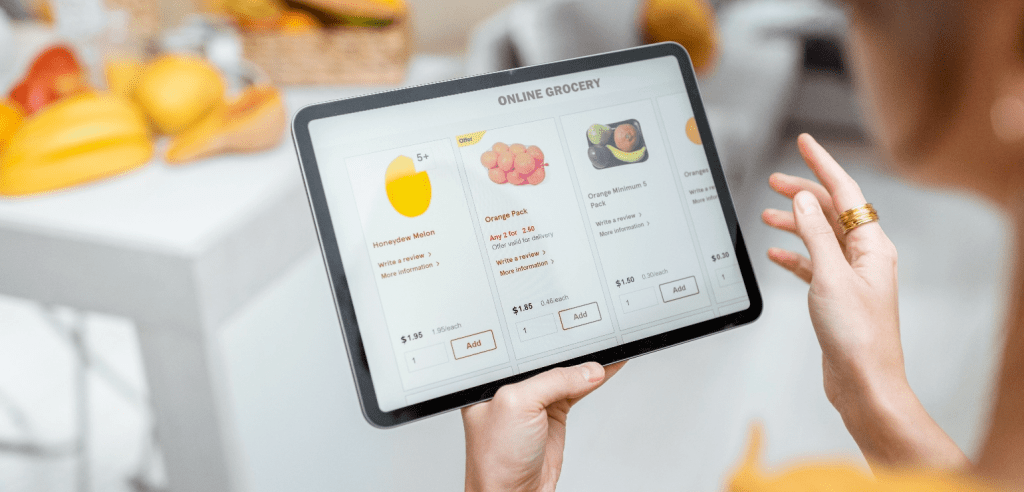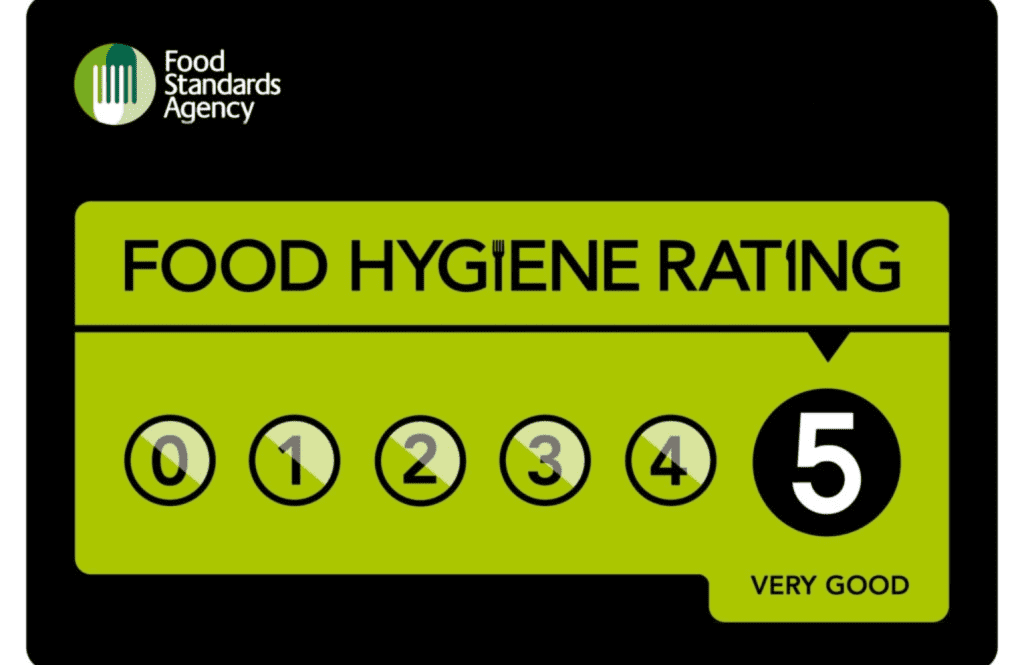What you need to know about selling food online

Article topics
- Put together a business plan
- Apply for food business registration
- Ensure you have the proper health and safety guidelines in place
- Know where (and how) you’re going to sell
From brownies to home-cooked meals, there are so many options when it comes to ordering food online!
However, what do you need to know if you want to sell tasty treats on your own website or through a marketplace?
We’ve put together this comprehensive guide to starting and promoting your own food business.
Important note: This information is accurate as of May 2024 and applies to England, Wales, and Northern Ireland. Food Standards Scotland is responsible for food safety and food hygiene across Scotland. While the processes below are largely the same, there may be minor differences.
1. Put together a business plan
If you need a loan from your bank to fund your business, you’ll need a business plan. This is a short document that details:
- Your business aims and goals
- The experience you have
- What you plan to sell
- Who your target customer is
- Who your competitors are and how you’re different to them
- How you’ll market your business
- Who your suppliers are
- What your operating expenses are
- How you’ll work (for example, will you run your business from home or a hired space)
The Prince’s Trust has a great guide to creating a solid business plan, detailing everything you need to show your bank.
Even if you don’t need a bank loan, it’s worth creating a business plan. This can help you determine who you want to sell to and identify potential weak spots in your business model before you get started.

2. Apply for food business registration
In addition to setting up as either a sole trader or a limited company, you need to apply for food business registration. This is done through your local council, and you must register at least 28 days before you start trading.
It’s free to apply, and your local council can’t refuse your application.
Some establishments may need additional approval before trading, but it’s unlikely that this will apply to you if you’re selling food online. If in doubt, check with your local council.
As part of your registration, environmental health officers from your local council will periodically visit your premises to make sure you comply with food safety laws. They can check your premises at any time, so be prepared!
If your local council identifies any issues, you must make improvements. If there are serious problems, you may be banned from using certain equipment or processes until improvements are made. In the worst-case scenario, your local council may shut you down.
Most premises are inspected every six months, but you may be inspected more or less frequently depending on what you sell and your previous inspection record. Your local council may also inspect your premises if someone reports an issue, for example, suspected food poisoning or foreign objects found in the food you sell.
This list shows what your local council will check during your inspection.
You will get a rating out of five, which you can display on your website, social media accounts, and emails.
If you have a physical business, you must display your rating near the customer entrance in Wales and Northern Ireland, but this is voluntary in England.
Ratings are available for everyone to view online.
Do you need to apply for licences?
You may need a license if you want to sell items from a stall or run a business that sells or supplies alcohol.
If you plan on making major alterations to your home to run your food business (for example, extending your kitchen), you may need planning permission. We recommend speaking to your local council to see if this may apply to you.

3. Ensure you have the proper health and safety guidelines in place
When you’re making food to sell, you need to make sure it’s safe to eat and will not cause any harm to consumers. You also need to ensure that you operate safely.
It’s important to keep copies of all your health and safety documentation, as your local council may ask to see it when they inspect your premises.
HACCP
You need to have a food safety management procedure in place. This is referred to as a Hazard Analysis and Critical Control Point (HACCP). A HACCP allows you to identify things that could make your food unsafe to eat and reduce the risk of these things happening. It acts as a risk assessment for your business.
The Food Standards Agency (FSA) has a tool for small businesses called MyHACCP, which will help you build a tailored HACCP for your business.
Alternatively, you may prefer to follow the Safer Food, Better Business procedures, which cover cleaning, cross-contamination, and cooking. There is a daily diary to complete where you can log issues and what you did to resolve them.
Health and safety policy
As well as a HACCP, you need to consider health and safety in your kitchen space. For example, how will you protect yourself against injury, and if there is a fire, how will you get out safely?
If you have five or more employees, you must have a written health and safety policy and fire risk assessment. You need to review and update these regularly, as well as when your processes significantly change.
If you have fewer employees, or even if it’s just you, we recommend having written policies. That way, you have documentation to show if your local council or insurer asks.
Traceability
You need to keep up-to-date records of all the ingredients you use and the suppliers the ingredients come from. You must also keep a record of all businesses you supply with food.
This means that if a supplier has to recall an ingredient, the FSA can get in touch with everyone who’s been affected.
Allergy information
You need to tell customers if the food you make contains any of the following allergens:
- Celery
- Cereals containing gluten (for example, wheat, rye, barley and oats)
- Crustaceans (for example, prawns, crabs and lobsters)
- Eggs
- Fish
- Lupin
- Milk
- Molluscs (for example, mussels and oysters)
- Mustard
- Peanuts
- Sesame
- Soybeans
- Sulphur dioxide and sulphites (at a concentration of more than ten parts per million)
- Tree nuts (for example, almonds, hazelnuts, walnuts, brazil nuts, cashews, pecans, pistachios and macadamia nuts)
You also need to handle and manage food allergens effectively when preparing food. For example, by thoroughly washing your hands regularly, and cleaning utensils before each use. Your HACCP can help you identify additional ways to prevent cross-contamination.
If you’re selling online, you will need to provide allergen information:
- Before the food is purchased, for example, on your website
- When the food is delivered, for example, on a label
This page on the FSA website provides more information about the different ways you can provide allergen information to your customers, depending on your business model.
Do you need health and safety training?
You don’t need to undertake health and safety training to run your business, but the FSA offers free safety training to help you understand the basics.
Your local council may offer additional training opportunities.
Even if you don’t undertake training, you need to show that you understand food hygiene and how to ensure the food you make is safe.

4. Know where (and how) you’re going to sell
If you’re selling food online, here’s what you need to consider.
Where you will sell
There are three options for selling food to customers online.
On your own website
The great thing about selling food on your own website is that you have full control over how it looks and operates. There are a wide range of eCommerce platforms to host your website on, including Shopify, WooCommerce, and Magento.
You will need to invest in marketing to ensure customers can find your website. Search engine optimisation (SEO) is an effective, relatively low-cost way to get started.
If you sell on your own website, you must make sure visitors can easily find your business’s legal name and address. You also need to include your company registration information if you’re a limited company.
Through a social media account
Some small businesses sell through social media. For example, a bakery selling to local customers may advertise on Instagram, and customers can send a direct message to place an order.
This can be a cost-effective way to manage orders and appeal to customers if you’re starting out. However, as you scale, you may need something with more functionality.
With platforms like Shopify, you can create a simple online store that you can link to directly from your social media accounts. This allows you to monitor your orders and provide additional features to customers.
Through a third-party marketplace
A third-party marketplace is a platform which you sell your products on for a fee. For example, Amazon, Not on the High Street, or dedicated food delivery platforms like Just Eat or Deliveroo.
The benefit of marketplaces is that they are well-optimised in the search engines and get a lot of traffic. However, it can be hard to get noticed, and you need to do your research to see how much revenue you’ll receive. Different marketplaces take different cuts.
It’s also important to bear in mind that the HFSS regulations may affect how you advertise on marketplaces if you sell foods that are high in fat, salt, or sugar.
Many eCommerce platforms make it easy to manage a website and marketplace presence on the same system, giving you the best of both worlds.
How you will deliver and package your food
You need to ensure that food reaches your customers so it is safe to eat by:
- Using food-grade packaging to reduce the risk of spillages and contamination
- Ensuring food is delivered as quickly as possible
- Packaging food sturdily so it stays intact
- Making sure food that needs refrigerating or freezing is kept cool in transit
- Telling customers when they can expect delivery of their order
If you deliver food yourself, you must keep your vehicle clean, in good condition, and separate food from non-food items.
How you will label your food
As well as providing allergy information, you need to include the following on your food labels:
- A description of the food
- A list of ingredients in descending order by weight, with allergens highlighted in bold
- Details of any genetically modified ingredients
- The net quantity in grams, kilograms, millilitres, or litres
- A ‘use by’ or ‘best before’ date
- How to store the food
- Instructions for use (if this is not obvious)
- Your name and address (or that of the responsible food business operator)
- The quantity of certain ingredients if they are highlighted by the labelling or mentioned in the name of the product (for example, a white chocolate and raspberry blondie)
- The country of origin of any beef, veal, fish, shellfish, wine, honey, olive oil, poultry, or fresh fruit and vegetables imported from outside the EU
- Batch or lot number (to help with traceability)
You also need to provide nutritional information if you’ve added vitamins or minerals to your food or made a health claim.
Additional labelling rules are in place for certain products – you can find out more on the gov.uk website.
You should make the information on your labels available on your product pages.
Xigen: your eCommerce specialists
While selling your food on a marketplace is convenient, having your own website means you call the shots.
You control the branding and how your products look. Plus, all the revenue you generate is yours – there are no third-party fees to pay.
At Xigen, we specialise in creating stunning online stores that your customers will love. Our expert team will design, build, and launch your eCommerce site – helping you on your way to sweet (or savoury) success!
Get in touch with us today to find out more.


 Back
Back